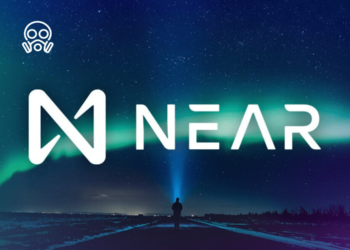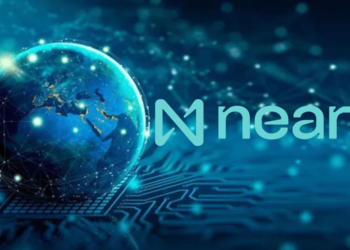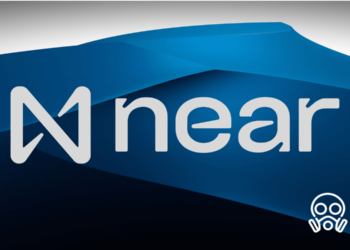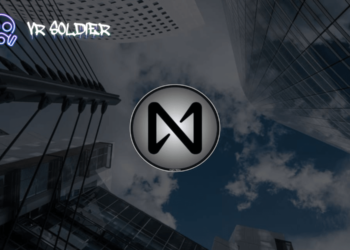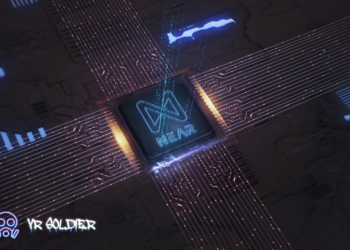The native coin of the NEAR protocol is used for staking by validator nodes and delegators on the network. The transaction fees in the protocol are very small, at the same time, the NEAR cryptocurrency becomes a deflationary coin over time.
NEAR partnered with Google Cloud and @databricks to accelerate its data query times from weeks to minutes while enabling developers to onboard more efficiently. 🧑💻
Read how @NEARProtocol improved its blockchain data querying and analytics experience: https://t.co/WCFwhM9Q93
— Google Cloud Partners (@gcloudpartners) January 17, 2024
NEAR Protocol is a blockchain focused on working with applications and smart contracts. It is similar to Ethereum and is fully compatible with it, but does not position itself as a competitor. Rather, both of these tools are good in their own way. NEAR supports ERC-20 tokens and the Solidity programming language.
NEAR Token Price Today
The weekly timeframe shows that the price has been falling down since breaking above the long-term resistance line in December. Additionally, the altcoin recovered above an important horizontal resistance area in the process.
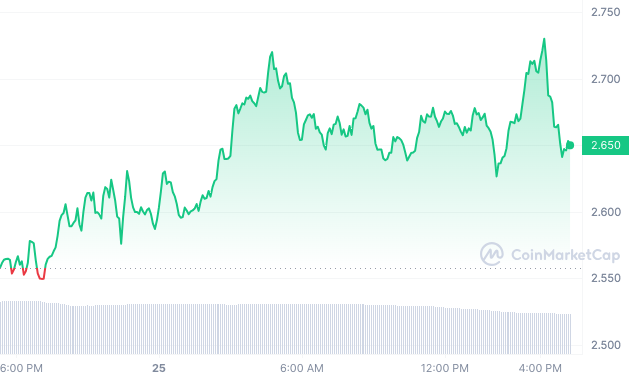
The Relative Strength Index (RSI) is now rising and above the neutral level of 50. It also formed a bullish divergence before the breakout. This is a positive sign that often precedes a trend reversal. Meanwhile, a decline below the 0.618 Fibonacci level at $2.55 would mark the end of the upward movement. In this case, a correction of 25% to $2.40 is expected.
It uses the Nightshade segmentation mechanism as well as the Doomslug block generation mechanism. Together they allow you to achieve throughput of up to 100 thousand TPS. Low commission fees are measured in units of “yocto” for convenience.
Comprehensive Insights into NEAR Cryptocurrency
The native coin of the NEAR protocol is used for staking by validator nodes and delegators on the network. The transaction fees in the protocol are very small, at the same time, the NEAR cryptocurrency becomes a deflationary coin over time. If more than a billion transactions take place on the network every day, then annual inflation will drop to zero.
| NEAR Protocol (NEAR) has the following features:price – $2.65
official website – NEAR.org; Medium – medium.com/NEARprotocol; Twitter – twitter.com/NEARProtocol; capitalization – $1.6 billion; total supply of tokens – 1 billion; number of coins in circulation – 893 million; number of transactions per second – 100 thousand. NEAR has a trading volume of $136,078,745 in the last 24 hours. |
If more than a billion transactions take place on the network every day, then annual inflation will drop to zero. The maximum token emission is 1 billion, of which more than a third has already been mined.
How to Buy NEAR?
Use cryptocurrency exchanges and platforms to purchase NEAR. Step-by-step instructions for purchasing tokens:
- Decide on the platform on which NEAR is traded. The token is available on Binance, Huobi Global, OKEx, KuCoin and Kraken. Make sure the exchange you choose is country supported, secure, and convenient.
- Register on the selected site and go through the identification procedure, if necessary. Verification may include the provision of identification documents and other information.
- Top up your account on the exchange. You can use fiat currencies such as dollars or euros, or other cryptocurrencies if the service supports transactions. Check available top-ups and payment methods.
- Go to the trading section and find a trading pair with NEAR. Enter the number of coins you plan to buy and the transaction price. Then confirm the application.
After purchasing NEAR, it is recommended to transfer them to a personal vault for security. If you don’t have a wallet, create one on the official website https://wallet.NEAR.org/ or use third-party software that supports crypto. Then send the tokens from the exchange to your wallet, specifying the NEAR address as the recipient.
What is the Purpose of NEAR Coins?
Essentially, NEAR is a utility token. It allows NEAR token holders to develop and use dApps on NEAR. Also, NEAR tokens are used to pay fees for utilizing these dApps. There are two types of fees on the NEAR network – transaction fees and data storing fees (users pay for each kilobyte of space utilized by an account).
Transaction fees are determined based on the complexity of the transaction. The fees are established in what are known as “gas” accounting units. 70% of the transaction fees are burned to keep the NEAR token deflationary, while the remaining 30% are returned to contracts that participated in transactions.
Tokenomics of NEAR Coins
The max supply of NEAR coins is 1 billion, which was created with the Genesis block of the NEAR blockchain. However, each year, epoch incentives worth 5% of additionally issued supply are distributed to support the network. 4.5% of this incentive goes to validators, while 0.5% goes to the NEAR treasury.
Overall, the total supply of NEAR tokens was allocated for community sale, foundation endowment, early ecosystem, core contributors, backers, community grants, and operation grants. The percentage of the portions that each sphere received was ranging from 6.1% to 17.6%.
What is the Purpose of NEAR Token?
Essentially, NEAR is a utility token. It allows NEAR token holders to develop and use dApps on NEAR. Also, NEAR tokens are used to pay fees for utilizing these dApps. There are two types of fees on the NEAR network – transaction fees and data storing fees (users pay for each kilobyte of space utilized by an account).
Transaction fees are determined based on the complexity of the transaction. The fees are established in what are known as “gas” accounting units. 70% of the transaction fees are burned to keep the NEAR token deflationary, while the remaining 30% are returned to contracts that participated in transactions.
Conclusion
The year 2024 looks promising for NEAR because of many important achievements, Including the launch of the B.O.S, the launch of NEAR DA, fast finality for Ethereum rollups, and more. Besides, talking about the NEAR Protocol price, it should be noted that it’s prone to crypto market changes. This means that, as the whole crypto market fluctuates, so does the NEAR price. However, this is usually the case with most crypto assets because the whole market is almost never stable due to various internal and external aspects.



